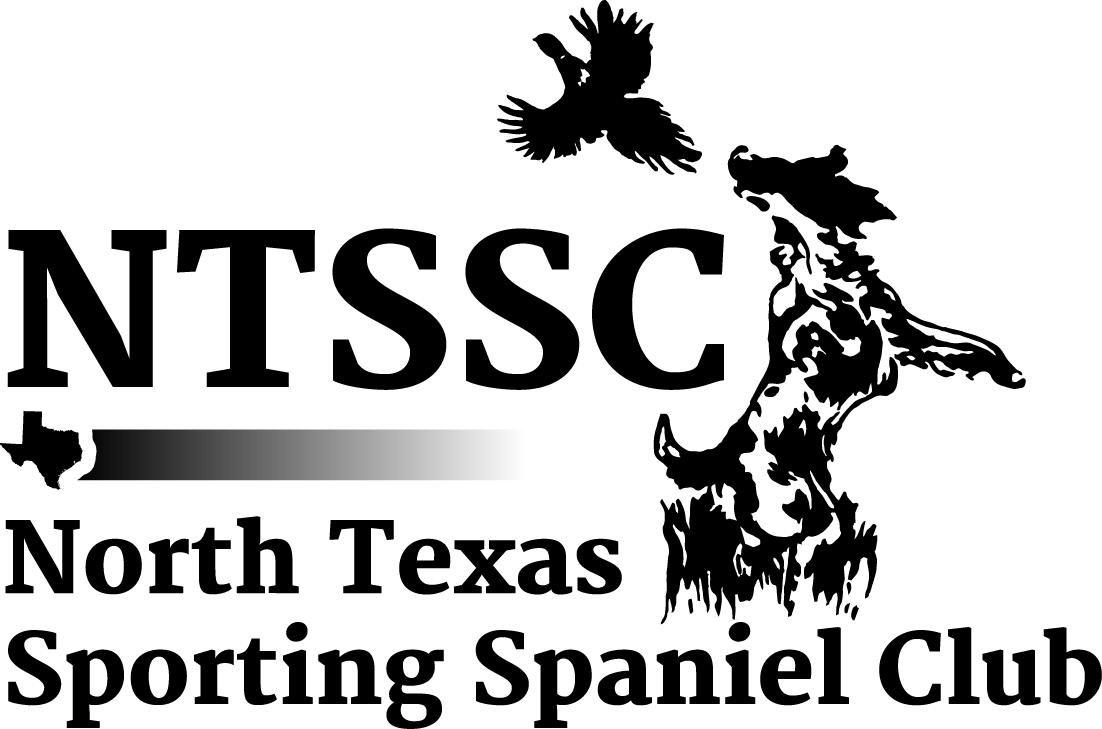Breed History
The English Springer Spaniel is a breed of gun dog in the Spaniel family traditionally used for flushing and retrieving game.
Descended from the Norfolk or Shropshire Spaniels of the mid-19th century, the breed has diverged into separate show and working lines. Less than a century ago, springers and cockers would come from the same litter. The smaller "cockers" hunted woodcock while the larger litter-mates were used to flush, or "spring," game. In 1902, the Kennel Club of England recognized the English Springer Spaniel as a distinct breed. They are used as sniffer dogs on a widespread basis. The term springer comes from the historic hunting role, where the dog would "spring" (flush) birds into the air.
An English Springer Spaniel is foremost an upland flushing dog. There are a number of skills that breeders train the dog to perform for their occupation.
Retrieve to Hand
Most hunters and all hunt test or field trial judges require that a dog deliver a bird to hand, meaning that a dog will hold the bird until told to give it to the hunter directly.
Scenting
Having the ability to scent game is of vital importance to the hunter. A springer should have a good nose in both wet and dry conditions. A dog with a good nose will learn to use the wind as it quests for game, ever adjusting its pattern according to the nuances of the wind.
Follow Hand Signals
Upland hunting involves pursuing wild game in its native habitat. Gun dogs must investigate likely covers for upland game birds. The dog must be responsive to hand signals in order for the hunter to be able to direct the dog into areas of particular interest.
Soft Mouth
Springers are taught to deliver game with a soft mouth, meaning he does not puncture it with his teeth. The game should always be fit for the table. If a springer damages the bird, it may be hard mouthed. This is a serious fault, but it can be difficult to determine whether it may have been genetic or caused by poor training methods. Breeders generally avoid using any springer that is hard mouthed.
Flushing
The springer should have a positive flush. It should not hesitate or point when encountering game. Some field trial dogs will often get airborne during a flush. This is exciting to watch, but is not necessary to win. Most hunters prefer that their dog not flush in that style, as it can present a risk to the dog.
Steady
When hunting upland birds, a flushing dog should be steady to wing and shot, meaning that he sits when a bird rises or a gun is fired. He does this in order to mark the fall and to avoid flushing other birds when pursuing a missed bird.
Quarter
A flushing spaniel's primary role is often as an upland flushing dog. Dogs must work in a zig-zag pattern in front of the hunter seeking upland game birds. The dog is taught to stay within gun range to avoid flushing a bird outside shooting distance. This pattern is one of the primary criteria used to judge a dog in a field trial.
Hup
This is the traditional command to sit and stay. When hupped the dog can be given direction called to the handler. The ability to hup a dog actively working a running bird allow the handler and any gunners to keep up without having to run.
Blind Retrieve
An adequately trained and experienced working springer can be expected to use all of the aforementioned attributes to be conducted by hand, whistle and command to a position whereby an unmarked lost game bird can be picked and retrieved to hand.

